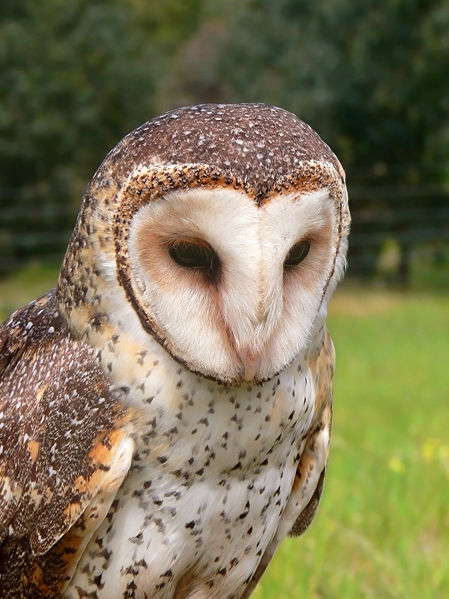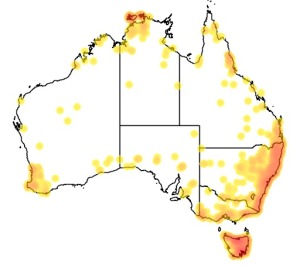Colours
Distinguishing features
Brown feathers surround a white, heart-shaped mask. Their dorsal plumage is brown, aside from light gray spots on the upper back. Their front is white with brown spots. Their eye color varies from black to dark brown. Females are darker shaded and larger than males.
They show strong reverse sexual dimorphism. They follow the typical pattern of birds from the tropics being much smaller than birds from temperate regions. In this instance, Tasmanian subspecies is the largest. (Wikipedia)
Size
- From 39 cm to 50 cm (Length of specimen) - applies to Females
- From 33 cm to 41 cm (Length of specimen) - applies to Males
Wingspan
- Up to 128 cm
Synonyms
Distribution
Distribution and habitat preferences
It inhabits timbered areas, often with a shrub understorey. In Australia they are seldom found more than 300 km inland. They roost and nest in large tree hollows near foraging areas. (Wikipedia)
Audio recordings
Diet
They are nocturnal and their prey includes rodents, small dasyurids, possums, bandicoots, rabbits, bats, birds, reptiles and insects. Foraging is primarily for terrestrial prey, however some prey is taken from the trees or in flight. (Wikipedia)



